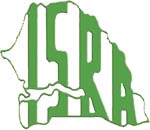Peanut diversity in Western Africa
Principal Investigator
Daniel Fonceka
Centre d’étude régional pour l’amélioration de l’adaptation à la sécheresse (CERAAS)
Institut Sénégalais de Recherches Agricoles (ISRA)
Thiès, Senegal
daniel.fonceka@cirad.fr
Co-PIs
Issa Faye
Centre National de Recherche Agronomique Bambey, Bambey, Senegal
issafaye2001@YAHOO.FR
Richard Oteng-Frimpong
Council for Science and Industrial Research (CSIR), Savanna Agricultural Research Institute (SARI), Tamale, Ghana
kotengfrimpong@gmail.com
Adama Coulibaly
Institut National de la Recherche Agronomique du Niger (INRAN), Centre Régional de la Recherche agronomique (CERRA), Maradi, Niger
Dramane Sako
Institut d’economie Rurale (IER), Centre Régional de Recherche Agronomique (CRRA), Kayes, Mali
Jean-Marcel Ribaut, Director, Integrated Breeding Platform (IBP), Km 45 Carretera Mexico-Veracruz, CIMMYT, El Batán, Texcoco, Mexico
j.ribaut@cgiar.org
Peggy Ozias-Akins
Department of Horticulture, University of Georgia, Tifton Campus, Tifton, GA, USA
pozias@uga.edu
Enhancing the genetic potential of peanut production in West Africa
Area of inquiry: Varietal Development
Country focus: Ghana, Mali, Niger and Senegal.
Project length: Four years
Budget: $300,000
Africa is known to be a secondary center of diversity for cultivated peanut. Peanut breeders from different countries in Africa each hold small parts of this diversity individually which, put together, represent unique genetic resources that could be used to map traits of interest and add value to breeding programs. A panel of about 200-300 accessions will be tested across a range of environments and conditions (at least four countries in West Africa, and four in Eastern and Southern Africa through David Okello’s project) to generate relevant information and data around diversity and the genetic basis for target traits, leading to a broadening of the genetic base for peanut breeding programs, and the development of new genes/markers for molecular breeding. The overall objective of the project is to characterize and document a unique pool of material that can be used as a new source of germplasm and alleles to improve peanut breeding in West Africa.
The accessions will come from a set of 600 peanut lines from across Africa that will go through phenotypic and genotypic evaluation in Senegal and Uganda. The set will represent as much of the groundnut diversity across the African continent as possible, but provide a set of a suitable size for multi-site evaluation in replicated trials. Breeders will evaluate this African core panel under local conditions in several countries in West Africa, including Ghana, Mali, Niger and Senegal.
Core panel performance will be evaluated running single and multi-environments (GxE) analysis from phenotyping data. Diversity analysis, bringing together phenotypic and genotypic data from this very diverse set of African accessions, will allow for a better understanding of the genetic diversity used by each breeding program in West Africa, and thus provide breeders with opportunities to enlarge the genetic pool of material they use as parental lines for new crosses. The same set of data will also allow genome-wide association studies (GWAS) to be run which will identify the genomic regions involved in the expression of target agronomic traits within a single environment, and across comparable ones. For simple inherited traits, association analysis could result in the identification of trait-linked markers that would be, after validation, suitable for forward breeding or allelic introgression. Genomic regions of interest for further gene pyramiding will also be identified for quantitative traits. Considering the performance of the core panel, some accessions performing well under specific local conditions might be considered as suitable donor lines for new crosses, or even ready to go directly into the national registration process.
This coordinated effort across strong, existing networks will enable us to:
1) assess diversity and identify germplasm from the core panel to be introduced to national breeding programs to fill possible diversity gaps;
2) dissect the genetic control of target trait variation via association studies, and identify trait-linked markers for breeding purposes;
3) based on performance, identify potential new donor lines for local breeding programs; and
4) increase capacities for a vibrant network of peanut breeders in West Africa to apply modern genetic approaches in breeding, and to collectively share and analyze data.
